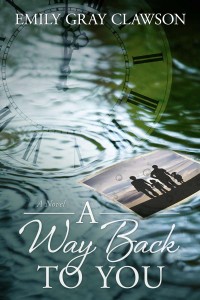Keeping up the tension
 I love a good page turner. You know, one that you pick up and four hours later you realize you just read the entire thing in one sitting? When a book grabs you by the navel on page one and yanks you through to the end at lightening speed it can be an exhilarating thing. Not every book (or every genre) is meant to do that but there are lessons we can all learn from a good page turner that will make our writing stronger and more engaging.
I love a good page turner. You know, one that you pick up and four hours later you realize you just read the entire thing in one sitting? When a book grabs you by the navel on page one and yanks you through to the end at lightening speed it can be an exhilarating thing. Not every book (or every genre) is meant to do that but there are lessons we can all learn from a good page turner that will make our writing stronger and more engaging.
Probably the biggest skill to learn is how to keep up the tension.
One of the common mistakes that we writers make is thinking that to keep up the tension, we have to keep up the danger. And a book that stays at a 10 all the time can leave the characters two dimensional, the reader exhausted and the book ultimately gets abandoned for something less, well, boring. After all, if something stays at a 10 for chapter after chapter, pretty soon that 10 starts to feel like a 2.
The key is to vary the tension in different plot lines. This keeps the writing fast paced but still gives it a rhythm and your reader a chance to breathe. One scene can escalate the mystery while the next may bring some resolution to the mystery yet escalates the romantic tension. This way we get the little payoffs that help the reader trust the author, stay emotionally engaged and still eager to turn the next page.
Music has always been one of my great loves. I was a musical theater major in college and I’ve taught voice lessons for years. One of the things any good musician understands is the need for dynamics. If a piece is sung at forte (loud) the entire time, it has nowhere to build. But if I’m singing quietly, I better be sure to keep the intensity in my voice. I do this by emphasizing consonants (especially ‘K’ sounds at the beginning of words) and keeping my diaphragm actively engaged. Think about the sound of an urgent whisper. That’s the effect I’m going for. This way I alternate the volume of my voice but the quiet moments can be even more enthralling than a big crescendo.
Even as I’m writing this I’m thinking of a scene I just worked on. It’s a quiet moment with a solitary character sitting at home alone after getting off the phone with her mother. The call was intense emotionally for her but she was pretty much in a stationary position during that time. Now that she’s off the call, the emotional tension needs to diminish for a time. We need some breathing space. But I don’t want my reader thinking, “Oh, this is a great time to go watch that Downton Abbey finale.” NO! I want them to keep reading so I’m going to jump immediately into getting her in an awkward and hilarious predicament. There is very little deep, internal angst that will develop but it will help us laugh and still wonder how she’s going to get out of the situation.
Some great resources on the topic:
Donald Maass’ book, The Fire in Fiction. And pretty much anything else that Donald Maass writes. Or tweets. Or thinks.
Dan Wells‘ video series on the 7 point story structure. He has some great points on how to plot out each story line and how to weave them together – a great way to keep the tension up.
Also, just read James Dashner’s The Maze Runner Trilogy (especially the first book) for a great example of how to do this well.
Best of luck!





